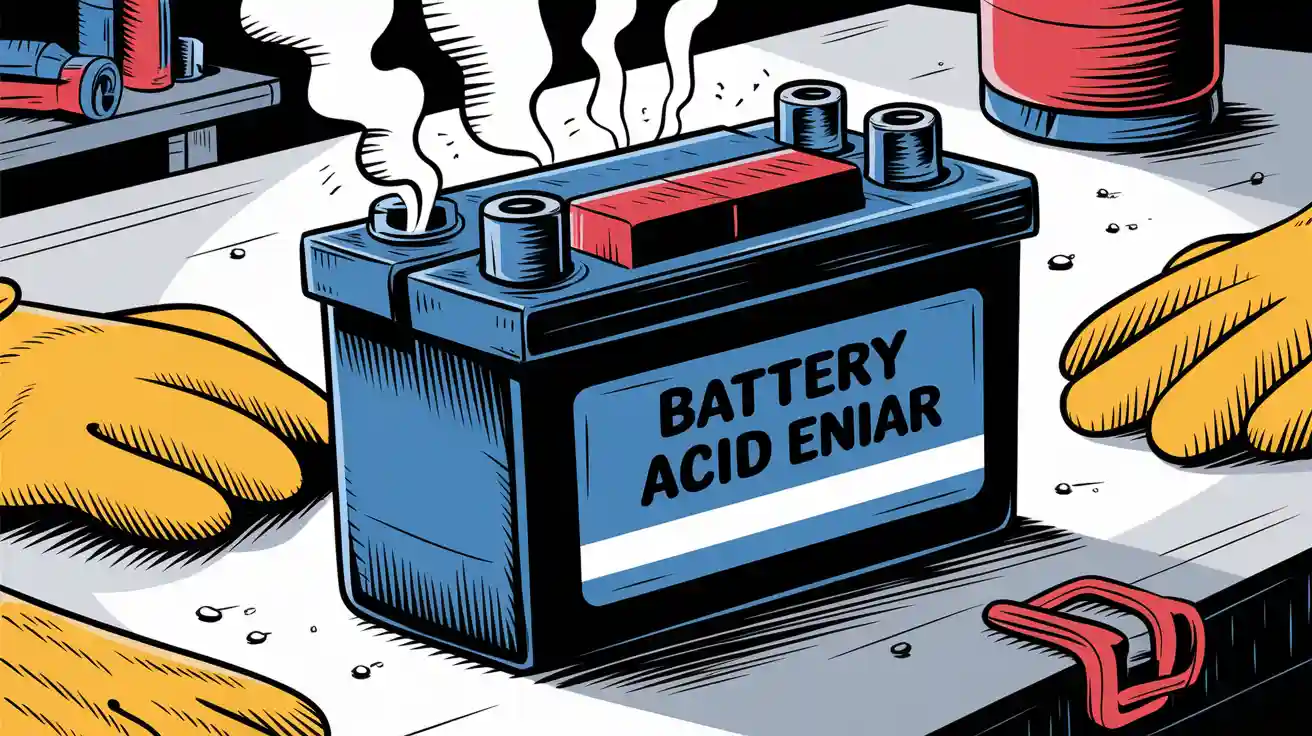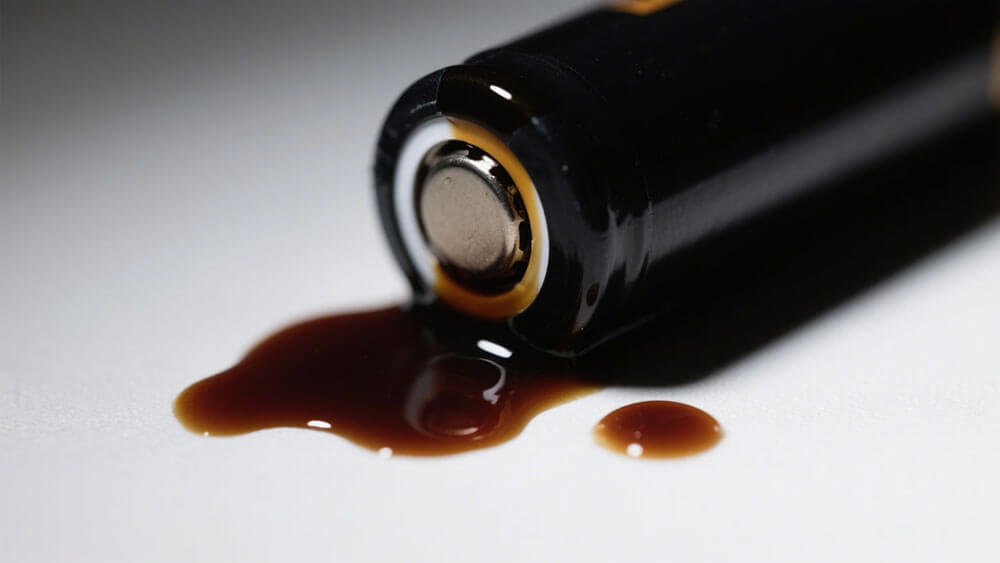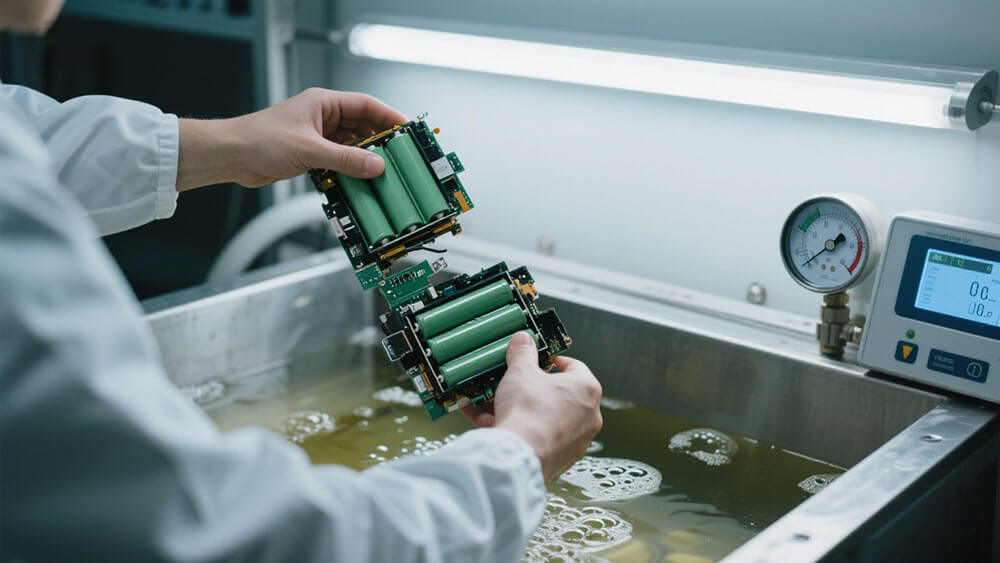
What does battery acid smell like, and how should I dispose of it? Battery acid typically emits a sharp, strong sulfuric odor, which can be a warning sign of danger. In the case of lithium-ion batteries, this smell often points to leakage or damage. Such situations pose risks like respiratory irritation, environmental contamination, and corrosion. To mitigate these hazards, proper handling and disposal are essential. Always prioritize safety measures and seek expert advice on how to manage compromised batteries responsibly.
Lithium-ion batteries play a crucial role in industries like consumer electronics, but understanding what does battery acid smell like and how should I dispose of it is equally important to prevent harm.
Explore custom solutions for lithium-ion battery management.
Key Takeaways
Battery acid smells sharp and like sulfur, showing possible leaks. Finding this smell early helps avoid health problems and pollution.
Take leaking batteries to approved recycling centers for disposal. Don’t put them in normal trash to stop pollution and danger.
Wear safety gear, like gloves and goggles, when touching battery acid. This keeps you safe from harmful chemicals.
Part 1: Characteristics of Battery Acid Smell

1.1 What Does Battery Acid Smell Like and How Should I Dispose of It?
The smell of battery acid is unmistakable. It often carries a sharp, sulfuric odor, sometimes accompanied by an acrid smell. This sulfuric acid smell is a critical indicator of potential battery leaks. Lithium-ion batteries, widely used in consumer electronics, robotics, and medical devices, can emit this odor when damaged or improperly handled. Recognizing this smell early can prevent health risks and environmental harm.
When you detect the smell of battery acid, immediate action is necessary. Proper disposal methods include contacting certified recycling facilities or hazardous waste management services. Never dispose of leaking batteries in regular trash bins. Doing so can lead to environmental contamination and pose risks to waste handlers. For lithium-ion batteries, consult experts to ensure safe disposal practices.
Tip: Always store batteries in a cool, dry place to minimize the risk of leaks. For more on sustainable battery management, explore Large Power’s sustainability initiatives.
1.2 Signs of Battery Leaks in Lithium-Ion Batteries
Battery leaks in lithium-ion batteries can manifest through both visual and olfactory indicators. You should watch for the following signs:
Visual Indicators:
Crusty deposits forming on battery terminals.
Bulging or distorted battery cases.
Olfactory Indicators:
Acrid smells that suggest hidden leaks.
These signs often point to compromised battery integrity. Lithium-ion batteries are essential in industrial applications, medical devices, and security systems. However, their chemical composition makes them prone to leaks under extreme conditions. Regular inspection and maintenance can help you identify these issues early.
If you notice any of these signs, isolate the battery immediately. Avoid direct contact with the acid and wear protective gear. For businesses relying on lithium-ion batteries, implementing a robust battery management system (BMS) can help monitor battery health and prevent leaks. Learn more about BMS operations here.
1.3 Specific Indicators of Leaking Car Batteries
Leaking car batteries often exhibit distinct signs that require your attention. These indicators include:
Consistently low fluid levels, which may signal sulfuric acid leakage.
Acidic steam escaping from the battery, visible during operation.
Loose or damaged vent caps, which can exacerbate leaks.
Reliable measurement tools like non-contact ultrasonic sensors can help monitor sulfuric acid levels in car batteries. Devices such as the EchoPod ultrasonic level transmitter provide continuous monitoring, alerting you to significant drops in acid levels. Regular checks of fluid levels and securing vent caps can prevent leaks and protect your vehicle from damage.
Note: Acid leaks in car batteries can corrode surrounding components, leading to costly repairs. Always prioritize regular maintenance to avoid long-term issues.
For businesses managing fleets or infrastructure systems, adopting preventive measures for battery maintenance is crucial. Explore custom battery solutions tailored to your needs.
Part 2: Implications of Smelling Battery Acid

2.1 Health Risks of Battery Acid Exposure
Exposure to battery acid poses significant health risks. Inhaling the sharp odor of sulfuric acid can irritate your respiratory system, leading to coughing, throat discomfort, or even difficulty breathing. Prolonged exposure to leaking batteries may result in more severe conditions, such as reduced lung function or dental erosion.
Health Effect | Findings |
|---|---|
Respiratory Issues | High exposure groups showed reduced FEV1 and peak flow values. |
FVC Reduction | Statistically significant reduction in high exposure groups. |
Dental Health | Teeth etching and erosion occurred four times more frequently in high acid-exposure groups. |
To minimize these risks, always check for battery leaks and handle leaking batteries safely. Use protective gear, such as gloves and masks, to avoid direct contact with toxic substances. If you suspect exposure, seek medical attention promptly.
2.2 Environmental Impact of Battery Leaks
Battery acid leakage can severely harm the environment. Quantitative analyses reveal that bis-FMeSI, a chemical found in battery acid, contaminates soils and sediments at concentrations ranging from 22.9 ng/kg to 2300 ng/kg. Its high mobility in water systems, indicated by a log Kd value of -0.18 L/kg, increases the risk of widespread contamination.
These leaks disrupt ecosystems, polluting water sources and harming aquatic life. Improper disposal of leaking batteries exacerbates these hazards. To mitigate environmental damage, recycle batteries through certified facilities and adopt sustainable practices. Learn more about sustainability initiatives here.
2.3 Damage to Equipment and Surroundings
Battery leaks can corrode equipment and surrounding materials. Sulfuric acid, commonly found in car and industrial batteries, reacts with metals, causing rust and structural damage. This corrosion compromises the functionality of devices and increases maintenance costs.
For example, leaking car batteries can damage engine components, while lithium-ion battery leaks in robotics or medical devices can disrupt operations. Regularly inspect batteries for signs of leaks, such as unusual odors or crusty deposits, to prevent costly repairs. Implementing a robust battery management system (BMS) can help monitor battery health and reduce safety hazards. Explore BMS solutions here.
Tip: Clean up battery leaks immediately using neutralizing agents like baking soda for sulfuric acid spills. Always prioritize safety when handling battery acid leakage.
Part 3: Steps to Handle Battery Acid Safely
3.1 Safety Gear for Handling Battery Acid
Handling battery acid requires proper safety gear to protect yourself from exposure to corrosive substances. Essential equipment includes chemical-resistant gloves, goggles, face shields, and protective clothing. These items create a barrier between your skin and the acid, minimizing risks during handling or cleanup.
The Occupational Safety and Health Administration (OSHA) mandates that employers provide personal protective equipment (PPE) for workers managing hazardous materials like battery acid. This compliance ensures that safety standards are met, reducing the likelihood of injuries or accidents. Whether you’re dealing with lithium-ion batteries in robotics or medical devices, wearing the right gear is crucial for safe operations.
Tip: Always inspect your safety gear for damage before use. Replace worn-out gloves or cracked goggles immediately to maintain effective protection.
3.2 Neutralization Methods for Battery Acid Spills
Neutralizing battery acid spills quickly prevents further damage to equipment and surroundings. For sulfuric acid spills, use baking soda or sodium bicarbonate. These substances react with the acid to neutralize its corrosive properties. Spread the neutralizing agent over the spill, then clean the area with water and a disposable cloth.
For lithium-ion battery leaks, isolate the battery first. Avoid direct contact with the leaked material. Use absorbent pads designed for chemical spills to contain the acid. Dispose of the pads according to hazardous waste guidelines. Regular training on spill management ensures you can act swiftly and effectively during emergencies.
Note: Never use water directly on battery acid spills without neutralizing the acid first. Water can spread the corrosive material, increasing the risk of damage.
3.3 Emergency Procedures for Accidental Contact
Accidental contact with battery acid requires immediate action to minimize harm. If the acid touches your skin, rinse the area with plenty of water for at least 15 minutes. Remove contaminated clothing to prevent further exposure. For eye contact, flush your eyes with water and seek medical attention immediately.
Inhalation of battery acid fumes can irritate your respiratory system. Move to fresh air and monitor your symptoms. If breathing difficulties persist, consult a healthcare professional. Businesses relying on lithium-ion batteries should establish emergency protocols and provide first aid training to employees.
Callout: Keep a first aid kit stocked with neutralizing agents and eyewash solutions near battery storage areas. This ensures quick access during emergencies.
Part 4: Preventive Measures

4.1 Preventing Battery Leaks in Lithium-Ion Batteries
Preventing battery leaks starts with proactive strategies that ensure the stability and longevity of lithium-ion batteries. You can minimize risks by maintaining optimal temperature levels between 15-25 degrees Celsius. Extreme heat or cold accelerates chemical reactions, increasing the likelihood of battery acid leaks. Protective cases shield batteries from dust and moisture, reducing external damage. Regular maintenance checks on battery components help identify early signs of wear or malfunction. Following the manufacturer’s charging guidelines prevents overcharging, which can compromise battery integrity.
Tip: Implement a battery management system (BMS) to monitor temperature and charging cycles. This system provides real-time data, helping you prevent leaks before they occur.
4.2 Best Practices for Storing Lithium Batteries
Proper storage practices play a crucial role in minimizing battery acid leakage. Store lithium-ion batteries at a state of charge (SoC) of around 40%. This prevents the voltage from dropping below 2.50V/cell, which can lead to chemical instability. Discard batteries if the voltage remains below 2.00V/cell for more than a week to avoid irreversible damage. For shipping, keep batteries at a SoC of 30% to reduce volatility during transit.
Callout: Always store batteries in a cool, dry environment away from direct sunlight. This reduces the risk of overheating and chemical degradation.
4.3 Regular Maintenance and Inspection Protocols
Routine inspections are essential for preventing hazards related to battery acid. You should test fire suppression systems and verify the presence of serviced extinguishers. Inspect fire and smoke detection systems to ensure functionality. Review emergency response plans and conduct fire drills to prepare for potential incidents. Advanced monitoring technologies provide real-time updates on battery conditions, enabling you to act swiftly if issues arise. Using fire-resistant materials in storage areas adds an extra layer of safety.
Note: Collaborate with fire safety experts to tailor inspection schedules and strategies to your specific needs. Regular maintenance checks and timely upgrades prevent aging components from causing leaks or other hazards.
Identifying the smell of battery acid, such as the sharp sulfuric odor from lithium-ion batteries, is crucial for preventing health risks and environmental damage. Proper handling, including the use of safety gear and adherence to hazardous waste disposal guidelines, minimizes exposure. Preventive measures like regular maintenance and optimal storage conditions further reduce risks.
Key Impacts of Battery Acid Exposure:
Millions of children globally face developmental risks due to lead exposure.
Occupational lead poisoning rates among battery workers have decreased but remain significant.
Adopting industry best practices, such as OSHA’s PPE standards and DOT’s transport regulations, ensures safe handling and disposal. Businesses should implement proactive battery management systems to enhance safety and sustainability. Explore custom battery solutions to align with these practices.
Tip: Partner with experts like Large Power to develop sustainable battery strategies.
FAQ
1. How can I tell if a battery is leaking without smelling it?
Look for visible signs like bulging, corrosion, or crusty deposits on the battery. These indicate potential leaks even without detecting an odor.
2. Is it safe to store damaged batteries at home?
No, storing damaged batteries at home increases fire and chemical exposure risks. Contact a certified recycling facility for safe disposal immediately.
3. What should I do if battery acid spills on my clothes?
Remove the clothing immediately and rinse the affected area with water. Wash the clothing separately to avoid spreading the acid to other garments.
Tip: Always keep a neutralizing agent like baking soda handy for quick spill management.






